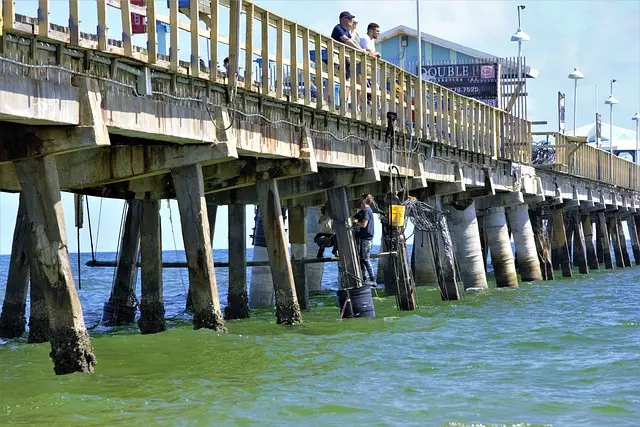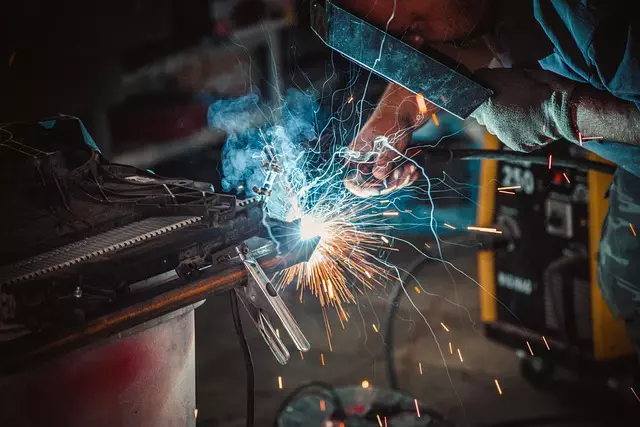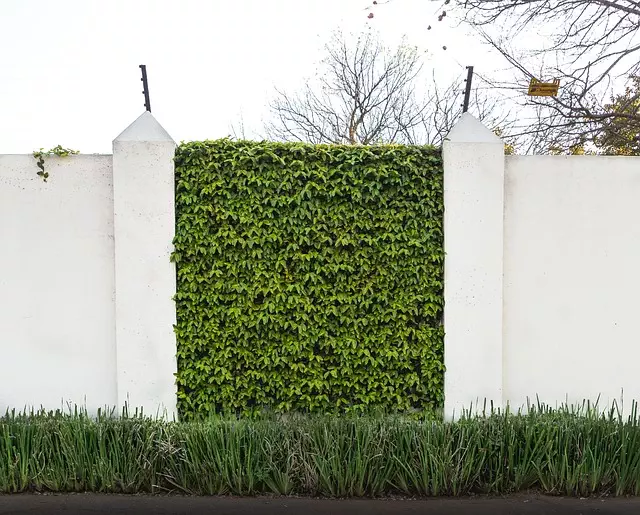Non-Invasive Pier and Beam Foundation Repair: Advanced Techniques for Long-Lasting Stability
Pier and beam foundations, common in older homes, require regular care due to vulnerabilities like s…….

Pier and beam foundations, common in older homes, require regular care due to vulnerabilities like settling, shifting soil, and age-related damage. Early detection of issues such as wall cracks, uneven floors, or doors that swing is crucial for preventing further structural problems. Non-invasive repair techniques, including pier levelization with hydraulic jacks and chemical injection, offer effective solutions without disruptive excavation. These methods preserve the home's character, reduce costs, and ensure faster completion times. Advanced technology, like sensors and robotic arms, enhances precision and efficiency in Pier and Beam Foundation Repair. Regular maintenance, including inspections, clearance of debris, proper drainage, and waterproof membranes, is vital for long-term stability and integrity.
“Discover innovative solutions for your home’s structural backbone with non-invasive pier foundation repair. This comprehensive guide explores the intricacies of pier and beam foundations, highlighting common damage indicators. We delve into the advantages of modern, less disruptive repair techniques, showcasing advanced technologies that ensure stability without extensive excavation. From understanding foundational issues to post-repair maintenance, this article covers all aspects of pier foundation repairs, empowering homeowners with knowledge for informed decisions.”
Understanding Pier and Beam Foundations: A Basic Overview

Pier and beam foundations, a common structural system in many older homes, consist of vertical support piers connected by horizontal beams. This design distributes weight evenly, providing stability for structures built on various terrains. However, over time, these foundations can experience damage from settling, shifting soil, or age-related deterioration, leading to cracks in the walls and other structural issues.
Regular inspection is key to identifying potential problems early on. Non-invasive pier and beam foundation repair techniques, such as pier levelization, involve using hydraulic jacks to adjust the position of piers, addressing any misalignment caused by settling. These methods are designed to be less disruptive and more cost-effective compared to traditional excavation and replacement, ensuring the structural integrity of homes while preserving the surrounding landscape.
Identifying Signs of Pier Foundation Damage

Pier and beam foundations are a common structural support system, particularly in older homes. Over time, signs of damage may emerge, indicating the need for pier foundation repair. One of the first indicators is visible cracks or bowing in the foundation walls, which can be caused by settlement or shifting soil. These structural issues often result from damaged or degraded piers, especially if they are made of wood, as moisture and pests can weaken their integrity.
Other signs include uneven floors, doors that stick or swing, and bubbling or cracking paint on exterior walls. If you notice any of these issues, it’s crucial to address them promptly to prevent further damage. Timely intervention in pier foundation repair can save significant costs and ensure the structural stability of your home.
The Benefits of Non-Invasive Pier Repair Techniques

The benefits of non-invasive pier repair techniques for Pier and Beam Foundation Repair are numerous. These advanced methods allow for minimal disruption to the existing structure, making it an ideal solution for historic or heritage homes where maintaining the original integrity is crucial. By avoiding traditional excavation and replacement, non-invasive repairs preserve the building’s character and value while ensuring structural stability.
Additionally, these techniques offer cost-effectiveness and efficiency. They reduce labor and material expenses compared to invasive methods, as they often involve less physical manipulation of the foundation. This means faster project completion times and less potential for unforeseen damage, making them a smart choice for both property owners and contractors looking to address Pier and Beam Foundation Repair issues with care and precision.
Advanced Technology in Pier Foundation Repairs

The world of construction and repair is constantly evolving, and Pier and Beam Foundation Repair is no exception. Advanced technology has revolutionized this process, offering non-invasive solutions that were once unimaginable. One such innovation is the use of advanced sensors and monitoring systems to assess the stability and condition of pier foundations. These remote sensing technologies provide accurate data without the need for physical intrusion, ensuring safety and minimizing disruption during repairs.
Additionally, modern equipment like robotic arms and precision tools enable technicians to perform intricate repairs with remarkable efficiency. This technology allows for precise adjustments and modifications, addressing specific issues while preserving the structural integrity of the entire foundation. As a result, non-invasive methods provide a cost-effective and timely solution for Pier and Beam Foundation Repair, catering to both residential and commercial properties.
Common Methods for Non-Invasive Pier Foundation Repair

Common Methods for Non-Invasive Pier and Beam Foundation Repair
One of the most popular non-invasive methods involves using chemical injection to strengthen the soil around the pier. This process involves drilling small holes into the ground near the foundation piers and injecting a specially formulated polymer or grout. These materials expand, filling any voids and increasing the overall strength of the soil, providing added support to the structure. This method is particularly effective for repairing subtle sinking or shifting issues without disturbing the surface.
Another technique leverages jacking and lifting equipment to adjust the position of the foundation piers. By carefully raising the pier back into place, professionals can realign the beam and column connections, effectively restoring structural integrity. This approach requires precise planning and heavy machinery but offers a non-invasive solution for severe cases of pier and beam foundation damage.
Step-by-Step Guide: What to Expect During the Process

During a non-invasive pier and beam foundation repair, the process aims to stabilize and strengthen your structure without extensive excavation or disruption. Here’s what to expect step-by-step:
1. Inspection: A skilled contractor begins by thoroughly inspecting the affected areas, identifying weak points, and assessing damage. This includes using advanced technology like ground-penetrating radar (GPR) to map the sub-surface conditions without breaking the surface.
2. Planning & Design: Based on the inspection findings, the contractor designs a tailored repair plan. This involves determining the best course of action for each pier or beam, whether it requires jacking, replacement, or reinforcing.
3. Preparation: Before any work begins, the site is prepared. This might include setting up scaffolding and protective barriers to ensure safety and prevent debris from falling. The contractor will also communicate any necessary temporary adjustments to access certain areas.
4. Non-Invasive Repairs: Using specialized equipment, the contractor implements the planned repairs non-invasively. This could involve inflating jacking devices under the piers to lift them into place or injecting expanding foam to fill voids and strengthen structures.
5. Testing & Adjustment: After repairs are completed, the contractor conducts thorough testing to ensure stability and structural integrity. Adjustments may be made as needed before finalizing the project.
Cost Analysis: Is Non-Invasive Repair Worth It?

When considering Pier and Beam Foundation Repair, cost analysis is a critical factor. Non-invasive methods offer a more economical solution compared to traditional, disruptive repair techniques. By avoiding extensive excavation and structural alterations, non-invasive repairs significantly reduce labor costs and minimize site disturbance. This makes it an attractive option for homeowners looking to stabilize their foundations without the high price tag often associated with conventional pier foundation repair.
While the upfront costs may be lower, the long-term benefits of non-invasive pier foundation repair are substantial. By addressing structural issues early and preventing further damage, property owners can avoid costly future repairs and potential foundation failure. This cost-effective approach not only saves money but also ensures the longevity and stability of the structure, providing peace of mind for years to come.
Maintaining Your Pier and Beam Foundation Post-Repair

After successful non-invasive pier and beam foundation repair, proper maintenance is key to ensuring longevity and stability of your structure. Regular inspection is crucial; check for any signs of settling, cracks, or movement in the foundation. Addressing these issues promptly can prevent further damage and costly repairs.
Keep the area around the piers clear of debris and ensure proper drainage to avoid water accumulation, which might compromise the repair. Applying a waterproof membrane on the surface can also shield against moisture intrusion. Regular maintenance not only extends the life of your pier and beam foundation but also maintains the overall structural integrity of your property.







